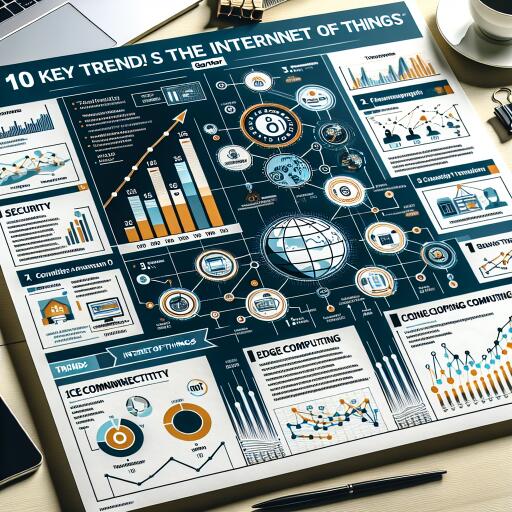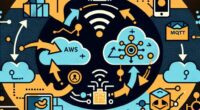Gartner’s Insight into Leading IoT Technology Trends Transforming the Digital Landscape
In the rapidly evolving technological ecosystem, the Internet of Things (IoT) stands as a transformative force, shaping the future of digital innovation. With the continuous integration of IoT across various sectors, organizations are on the brink of unlocking unparalleled potential. A glimpse into this future is presented through Gartner’s analysis, highlighting the top IoT technology trends poised to redefine operational efficiencies and technological capabilities.
As organizations navigate through the complexities of technological advancements, the crux of their challenge lies in adapting to technological immaturity while managing the associated risks. This calls for a profound understanding and mastery over emerging technologies to stay competitive.
The realm of app development has been particularly receptive to the benefits offered by IoT technologies, ensuring the delivery of products that encapsulate both quality and innovation. Here’s an exploration of the 10 paramount IoT technology trends for the forthcoming year, as envisaged by Gartner.
1. IoT Security
With the advent of IoT, the digital landscape faces a slew of new security challenges, spanning from device vulnerabilities to data integrity threats. Addressing these concerns necessitates a robust security framework capable of safeguarding IoT devices and their communications against unauthorized access and tampering.
2. Advanced Analytics
The influx of data from IoT devices demands innovative analytical approaches, transcending traditional analysis methods. This evolution prompts organizations to adopt sophisticated tools and algorithms, fostering insights into consumer behavior and product enhancement.
3. Device Management
Efficient management of IoT devices is paramount, especially in large-scale deployments. This encompasses firmware updates, security patches, and seamless interoperability across diverse devices, ensuring streamlined management and monitoring.
4. Short-Range IoT Networks
Short-range, low-power IoT networks are anticipated to dominate connectivity solutions up to 2025, emphasizing the importance of cost-effective and energy-efficient communication protocols in the IoT ecosystem.
5. Wide-Area IoT Networks
The quest for wide-coverage IoT networks highlights the limitations of traditional cellular networks, paving the way for Low-Power Wide-Area Networks (LPWANs) and emerging standards like Narrowband IoT to fulfill the demand for long-range, low-power IoT connectivity solutions.
6. IoT Processors
Processor technology for IoT devices is undergoing a significant transformation, with a predicted shift towards 32-bit microcontrollers overtaking 8-bit counterparts by 2020, underscoring the evolving hardware requirements for IoT applications.
7. IoT Operating Systems
The inadequacy of conventional operating systems for IoT applications has led to the development of IoT-specific operating systems, addressing the unique processor and memory requirements of IoT devices.
8. Event Stream Processing
Real-time analysis of high-velocity data streams generated by IoT applications necessitates the adoption of distributed stream computing platforms, capable of handling thousands to millions of events per second.
9. IoT Platforms
IoT platforms emerge as comprehensive solutions, amalgamating essential components of an IoT system, thereby facilitating the integration and management of IoT devices and data.
10. IoT Standards and Ecosystems
The establishment of IoT standards and ecosystems plays a pivotal role in enabling seamless communication among devices, driven by the need for interoperable data exchange protocols.
Final Thoughts
As IoT technologies continue to evolve, they bring forth an array of opportunities and challenges alike. Addressing security and privacy concerns becomes paramount, particularly for devices handling sensitive data. With regulations like the General Data Protection Regulation (GDPR) setting the groundwork, the onus falls on vendors and service providers to ensure the integrity and confidentiality of data in the IoT landscape. Embracing the full spectrum of IoT technology trends is essential for organizations aiming to harness the potential of this digital revolution.









